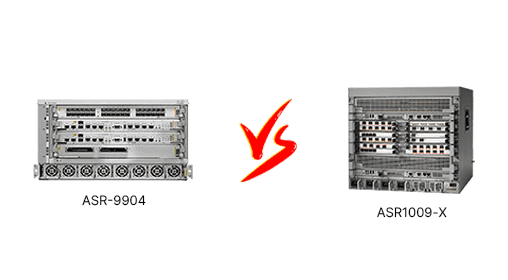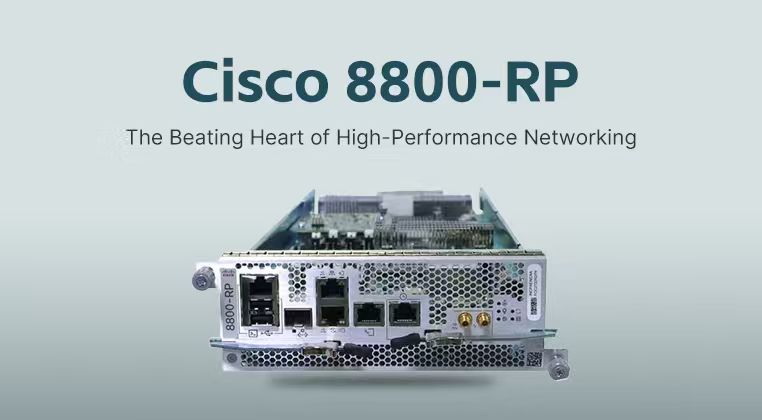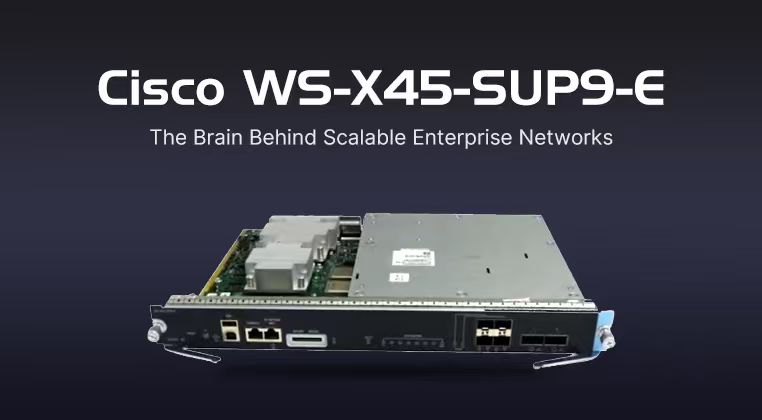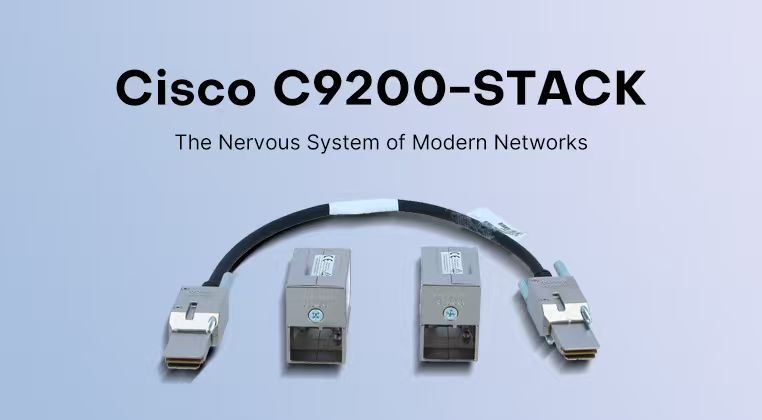














Cisco's Heavy-Duty vs. Compact Power: ASR-9904 and ASR1009-X Face-Off
Hey there! If you're trying to figure out the real difference between Cisco's ASR-9904 and the ASR1009-X, you've come to the right place. It's like comparing a massive freight truck built for the data center highway with a nimble, all-terrain vehicle designed for the network edge. They're both solid pieces of gear, but they're built for completely different jobs. Let's break it down without all the confusing jargon.
First up, the hard numbers. This table gives you a quick snapshot of how they stack up on paper.
|
Core Parameter |
Cisco ASR-9904 |
Cisco ASR1009-X |
|---|---|---|
|
Series / Target Use |
Aggregation Services Router (ASR) 9000 Series / Service Provider Core & Aggregation |
Aggregation Services Router (ASR) 1000 Series / Enterprise WAN Aggregation, Mid-Size Data Center |
|
Chassis Size (RU) |
6 RU
|
Compact, lower RU (typically 2-3 RU for similar models) |
|
Max System Capacity |
Up to 16 Tbps
|
Designed for high performance in a compact form factor (specific capacity typically lower than ASR-9904) |
|
Key Architecture |
Modular chassis with separate Route Processor (RP), Line Cards, and Fabric modules
|
Integrated system with fixed port configurations or limited modularity |
|
Software OS |
Cisco IOS XR
|
Cisco IOS XE |
|
High-Availability Features |
Redundant RPs, Redundant Fabric cards (e.g., 6+1 redundancy)
|
Typically redundant power supplies and fans |
Just looking at the chassis size and capacity tells you a big part of the story. The ASR-9904 is a beast built for massive scale. With its 6 RU footprint and capacity up to 16 Tbps, it's the kind of router you find at the very heart of a large service provider's network or a huge data center, where handling enormous amounts of traffic 24/7 is the main job. Its modular design means you can load it up with different line cards and have full redundancy for critical components like the route processor and fabric cards—downtime is simply not an option here.
The ASR1009-X, on the other hand, packs a serious punch into a much smaller box. It's designed for places like a large enterprise's main site or a mid-sized data center where space and power might be more constrained, but you still need reliable, high-performance WAN connectivity. It runs on Cisco IOS XE, which will feel more familiar to engineers who've worked with Cisco enterprise switches and routers. Its high-availability often focuses on redundant power and fans, making it robust for its target environments.
When you look at them, the physical difference is obvious. The ASR-9904 is a substantial modular chassis that demands a serious data center rack setup. The ASR1009-X has a more compact, integrated design that's easier to fit into various spaces.
For the person managing these boxes, the experience is quite different. Working on the ASR-9904 means dealing with Cisco IOS XR, the operating system built for massive, complex service provider networks. It's incredibly powerful and granular, but there can be a learning curve if you're coming from an enterprise background. The ASR1009-X with IOS XE is generally seen as more approachable for enterprise IT teams, offering a robust feature set in a more familiar management environment.
Talking about value, it's all about what you need. The ASR-9904's value is in its massive scalability and redundancy. You're investing in a platform that can grow and handle huge traffic loads with carrier-grade reliability. The ASR1009-X offers great value for organizations that need strong performance and reliability in a more compact, potentially easier-to-manage package—it's about powerful connectivity without the extreme scalability.
Let's break down the pros and cons straight up.
Cisco ASR-9904: The Service Provider Powerhouse
Pros: Massive scalability and throughput (up to 16 Tbps). High port density for large-scale deployments. Full modularity and redundancy for critical components (RP, Fabric). Runs the robust IOS XR operating system.
Cons: Large physical footprint (6 RU). Higher overall power consumption. Greater complexity and potentially steeper learning curve for management.
Cisco ASR1009-X: The Compact Enterprise Workhorse
Pros: High performance in a compact form factor, saving rack space and power. Simpler, more integrated design often easier to deploy and manage. Runs the familiar IOS XE operating system.
Cons: Lower maximum scalability and port density compared to the ASR-9904. Limited modularity and expansion options.
Stability is a key point for both, but again, in different ways. The ASR-9904 is engineered for the non-stop, carrier-grade reliability required in service provider networks where any downtime has significant consequences, thanks to its redundant key components. The ASR1009-X is built for very high reliability in enterprise and mid-market data center contexts, where its design ensures stable operation.
The Bottom Line?
Your choice really boils down to the scale of your operation.
If you're building or running the core of a large service provider network or a massive data center where scalability, massive throughput, and ultimate redundancy are non-negotiable, the ASR-9904 is the clear choice.
But if you need a powerful, reliable router for a large enterprise WAN edge or a mid-sized data center where a compact size, ease of management, and solid performance are the priorities, the ASR1009-X is an excellent fit.
Choose the tool that matches the job. Hope this helps clear things up




